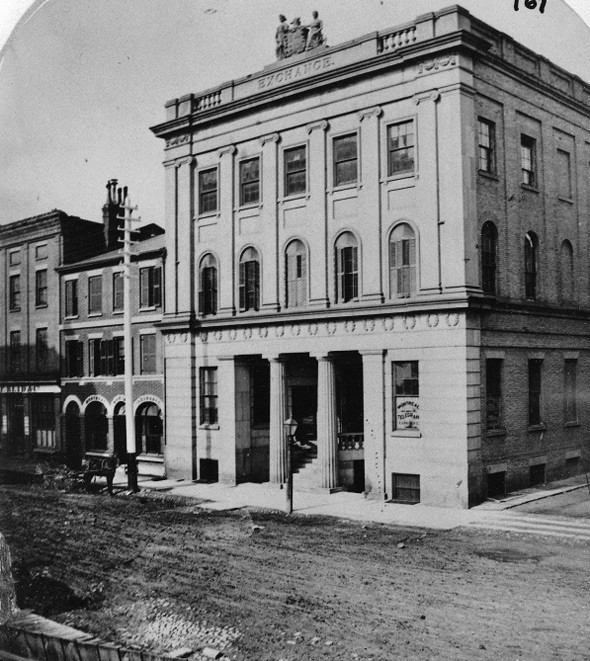History Of The Toronto Stock Exchange
Post on: 28 Октябрь, 2015 No Comment

Until the mid-1800s, much of the capital for the early development of Canada was raised in the London market, with public shares of the large companies of the time, such as Hudson’s Bay Company, (the oldest commercial corporation in North America, founded in 1670) held in Great Britain. From the mid-1800s, however, the increasing supply of financial instruments, such as railway bonds and mining stocks, led to the emergence of a growing number of financial brokers.
The initial formation of the Toronto Stock Exchange (TSX) can be traced back to July 26, 1852, when a group of Toronto businessmen met with the intention of forming an association of brokers. Read on to learn how this exchange evolved into the largest stock exchange in Canada and, as of 2008, the seventh-largest in the world. (Find out more about the history of trading in The Birth Of Stock Exchanges .)
In 1914, concerns about financial panic due to World War I prompted the shutdown of the TSX for a three-month period. Stocks rose in tandem with corporate profits during World War I, culminating in the 1918 Armistice that marked the beginning of a speculative period in the economy. Financings and trading volumes rose appreciably during the 1920s, with the number of shares traded annually on the TSX rising from just over 900,000 in 1924 to over 10 million in 1929.
The boom times ended with the Great Depression of the 1930s. But while more than 2,000 investment and brokerage firms closed in the U.S. no TSX members defaulted on their obligations to clients. In order to cope with the economic crisis, the TSX merged with its main competitor, the Standard Stock and Mining Exchange, with the merged markets adopting the Toronto Stock Exchange name. By 1936, the TSX had become North America’s third largest exchange, with annual trading volume exceeding $500 million. (For more on this turbulent time, check out What Caused The Great Depression ? )
1951 — 2000
By 1955, the price of TSX membership had risen to $100,000, and annual trading volume had reached a record one billion shares. The TSX’s board of governors tightened disclosure requirements in 1958, requiring listed companies to file statements disclosing any change in the company’s affairs that might affect the price of its shares.
1977 was another banner year for the TSX, as the exchange launched the world’s first Computer Assisted Trading System (CATS), as well as the TSX 300 Composite Index. which would become the benchmark index for the Canadian equity market. By 1980, the TSX was accounting for 80% of all equity trading in Canada, with annual trading volume of 3.3 billion shares worth close to $30 billion.
In 1987, despite the steep correction of October which included a day now known as Black Monday that erased $37 billion or 11% of total market value for companies listed on the TSX 300 Composite Index, the value of stocks traded during the year exceeded $100 billion for the first time.
The TSX maintained its technology leadership in the 1990s. In 1996, it became the first exchange in North America to introduce decimal trading and the following year, became the largest North American exchange at the time to opt for fully electronic trading when it closed its trading floor.
In 1999, amid a major realignment of Canadian exchanges, the TSX became Canada’s sole exchange for trading senior equities. The Montreal Exchange became the center for derivatives trading, while the Vancouver and Alberta Stock Exchanges merged to form the Canadian Venture Exchange, handling trading in junior equities.

Trading volumes continued to set new records. In March 2000, monthly trading on the TSX rose above $100 billion for the first time; two months later, daily trading volume topped a record $15 billion. In April 2000, the demutualization process that was started in 1999 was completed, enabling the TSX to become a for-profit company.
2001 — Present
In 2001, the TSX completed the acquisition of the Canadian Venture Exchange, which was renamed TSX Venture Exchange the following year. In 2002, Standard & Poor’s (S&P) took over management of the TSX 300 Composite Index, which was renamed S&P/TSX Composite Index. In April of that year, the Toronto Stock Exchange was rebranded as TSX. (Read about the two largest exchanges in North America in The Tale Of Two Exchanges: NYSE And Nasdaq .)
In 2005, total value traded on the TSX exceeded $1 trillion for the year for the first time. In 2007, the TSX Group and Montreal Exchange agreed to combine to form TMX Group. The two entities completed their business combination in 2008, with the TSX Group undergoing a name change to TMX Group (TSX:X ).
With approximately 4,000 companies listed, the TMX Group ranks second in the world in terms of listed public companies as of August 2008. The TMX was also ranked No.7 in the world in 2007 for raising equity capital, with C$58.8 billion raised through a total of 465 financings. The TMX is one of the most vibrant markets in the world for mining and energy issues, and had the largest number of listed mining companies in the world in 2008. In 2007, TSX and TSX Venture issuers accounted for 35% of total equity capital raised for mining companies worldwide.
For the answers to all the questions you have about stock exchanges but are too afraid to ask, check out Getting To Know The Stock Exchanges .














